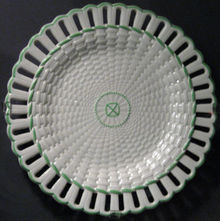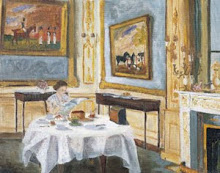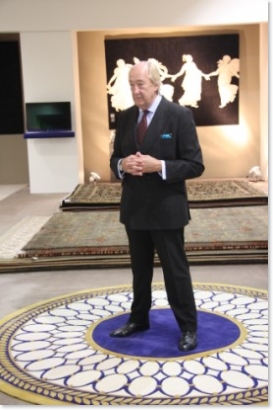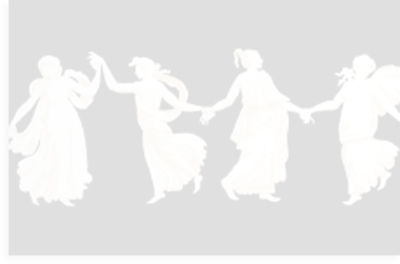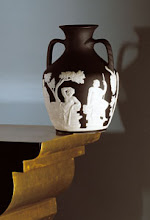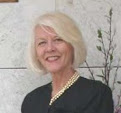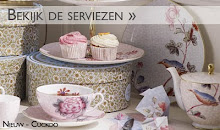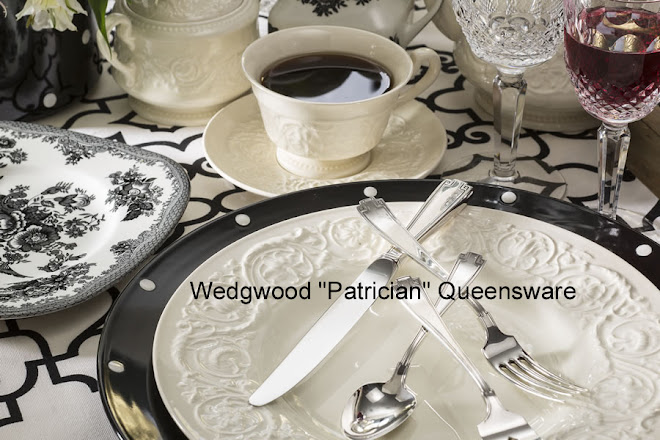Tuesday, July 23, 2013
INTERESTING CANALSIDE VIEW OF WEDGWOOD BARLASTON PLUS MORE - CANAL BOATS
Here is an interesting view of the Barlaston Wedgwood factory from the Trent & Mersey Canal, of course that's the waterway that Josiah created to help get his, and others', goods from Stoke to their markets in other parts of the world. If you wander around this great blog you'll likely learn something new, I sure did. I know about canals, and skinny boats, but did not know there is a whole narrow boat culture out there. But for us Wedgwood fans there are a couple of great photos on this blog of scenes one doesn't normally get to photograph at the factory. Do enjoy this blog and think how amazed Josiah would be if he could know what great things would float up and down "his" canal all these years later!
Tuesday, July 16, 2013
TRAITOR BENEDICT ARNOLD, AFICIONADO OF WEDGWOOD - WHO KNEW?
Recently I won a book through Fieldstome Common History Radio, a web-based radio show all about genealogy and American History. The book I won is "Defiant Brides, the Untold Story of Two Revolutionary-era Women and the Radical Men They Married". This is the story of the parallels in time and place of Peggy Shippen Arnold, Mrs. Benedict, and Lucy Flucker Knox, Mrs. Henry. It is a well-written biography of two strong women who found themselves on the main stages of America's history during the American Revolutionary period.
As we Wedgwoodians so often find, one just never knows where a Wedgwood reference will pop up. It happens to many of us frequently and we share our encounters with one another in many ways. This one is another on my long list of Wedgwood-in-totally-unexpected-places finds. On page 136 we learn: "Superficially, the Arnolds' social success in London society in 1782 seemed ensured. Though not fabulously wealthy, the Arnolds lived luxuriously. Their townhouse was outfitted with fine mahogany furniture; their table handsomely appointed with fine silver, crystal, and Wedgwood..." And on page 155 we find Benedict and Peggy back on the North American continent, in St. John, New Brunswick, Canada. "The Arnolds' clapboard home on the corner of King and Cross (now Canterbury) streets was less stately than their London townhouse but, by Saint John standards, still impressive. Two and a half stories high with a gambrel roof, it symbolized Arnold's status as a town father. Within it stood the family's London furnishings, blue-damask sofas, matching curtains, mahogany chairs cabinets and chests, Wedgwood dishes, giltware, and a globe." Who knew someone so vilified in our history could have the good sense and good taste to own Wedgwood china? Perhaps we can't excuse his poor behaviour but we can at least give him a modicum of credit for his good sense in some of life's luxuries.
For an interesting look into the personal lives of two important players on the Revolutionary stage, you might want to check out Nancy Rubin Stuart's book, Defiant Brides, published by Beacon Press, Boston, 2013, www.beacon.org. And a big thank-you to Marian Pierre-Louis and her stellar programming on Fieldstone Common for running the give-away! You can learn a lot of history and genealogy at www.blogtalkradio.com/FieldstoneCommon.
As we Wedgwoodians so often find, one just never knows where a Wedgwood reference will pop up. It happens to many of us frequently and we share our encounters with one another in many ways. This one is another on my long list of Wedgwood-in-totally-unexpected-places finds. On page 136 we learn: "Superficially, the Arnolds' social success in London society in 1782 seemed ensured. Though not fabulously wealthy, the Arnolds lived luxuriously. Their townhouse was outfitted with fine mahogany furniture; their table handsomely appointed with fine silver, crystal, and Wedgwood..." And on page 155 we find Benedict and Peggy back on the North American continent, in St. John, New Brunswick, Canada. "The Arnolds' clapboard home on the corner of King and Cross (now Canterbury) streets was less stately than their London townhouse but, by Saint John standards, still impressive. Two and a half stories high with a gambrel roof, it symbolized Arnold's status as a town father. Within it stood the family's London furnishings, blue-damask sofas, matching curtains, mahogany chairs cabinets and chests, Wedgwood dishes, giltware, and a globe." Who knew someone so vilified in our history could have the good sense and good taste to own Wedgwood china? Perhaps we can't excuse his poor behaviour but we can at least give him a modicum of credit for his good sense in some of life's luxuries.
For an interesting look into the personal lives of two important players on the Revolutionary stage, you might want to check out Nancy Rubin Stuart's book, Defiant Brides, published by Beacon Press, Boston, 2013, www.beacon.org. And a big thank-you to Marian Pierre-Louis and her stellar programming on Fieldstone Common for running the give-away! You can learn a lot of history and genealogy at www.blogtalkradio.com/FieldstoneCommon.
Friday, July 12, 2013
HAPPY BIRTHDAY JOSIAH WEDGWOOD -GOING STRONG AT 283!
Here is a nice post we found this morning which talks a lot about Josiah and why we are still telling him Happy Birthday 283 years later! (I'm not sure the links work, but at the bottom are some excellent references.) Be sure to see our website for lots of Josiah's company's wares and lots of INFORMATION about Wedgwood! Remember to learn about what you collect, information is power!

Etruria Hall, the family home, built 1768–1771 by Joseph Pickford. It was restored as part of the 1986 Stoke-on-Trent Garden Festival and is now part of a four-star hotel.
BiographyEarly lifeBorn in Burslem, Staffordshire, England, the twelfth and last child of Thomas Wedgwood and Mary Wedgwood (née Stringer; d. 1766), Josiah was raised within a family of English Dissenters. He survived a childhood bout of smallpox to serve as an apprentice potter under his eldest brother Thomas Wedgwood IV. Smallpox left Josiah with a permanently weakened knee, which made him unable to work the foot pedal of a potter's wheel. As a result, he concentrated from an early age on designing pottery rather than making it.In his early twenties, Wedgwood began working with the most renowned English pottery-maker of his day, Thomas Whieldon. He began experimenting with a wide variety of pottery techniques, an experimentation that coincided with the burgeoning of the nearby industrial city of Manchester. Inspired, Wedgwood leased the Ivy Works in his home town of Burslem. Over the course of the next decade, his experimentation (and a considerable injection of capital from his marriage to a richly-endowed distant cousin) transformed the sleepy artisan works into the first true pottery factory. Marriage and childrenWedgwood married Sarah Wedgwood (1734–1815), his third cousin, in January 1764. They had seven children:
WorkJosiah worked in pottery, and his work was of very high quality. If he saw in his workshop an offending vessel that failed to meet with his standards, he would smash it with his stick, exclaiming, "This will not do for Josiah Wedgwood!"[citation needed] He was also keenly interested in the scientific advances of his day and it was this interest that underpinned his adoption of its approach and methods to revolutionize the quality of his pottery. His unique glazes began to distinguish his wares from anything else on the market. He was perhaps the most famous potter of all time.By 1763, he was receiving orders from the highest levels of the British nobility, including Queen Charlotte. Wedgwood convinced her to let him name the line of pottery she had purchased "Queen's Ware", and trumpeted the royal association in his paperwork and stationery. In 1774, Empress Catherine of Russia ordered the Green Frog Service from Wedgwood; it can still be seen in the Hermitage Museum.[2] An even earlier commission from Catherine was the Husk Service (1770), now on exhibit in Petergof. As a burgeoning industrialist, Wedgwood was a major backer of the Trent and Mersey Canal dug between the River Trent and River Mersey, during which time he became friends with Erasmus Darwin. Later that decade, his burgeoning business caused him to move from the smaller Ivy Works to the newly-built Etruria Works, which would run for 180 years. The factory was so-named after the Etruria district of Italy, where black porcelain dating to Etruscan times was being excavated. Wedgwood found this porcelain inspiring, and his first major commercial success was its duplication with what he called "Black Basalt". Not long after the new works opened, continuing trouble with his smallpox-afflicted knee made necessary the amputation of his right leg. In 1780, his long-time business partner Thomas Bentley died, and Wedgwood turned to Darwin for help in running the business. As a result of the close association that grew up between the Wedgwood and Darwin families, Josiah's eldest daughter would later marry Erasmus' son. One of the children of that marriage, Charles Darwin, would also marry a Wedgwood — Emma, Josiah's granddaughter. This double-barreled inheritance of Wedgwood's money gave Charles Darwin the leisure time to formulate his theory of evolution. In the latter part of his life, Wedgwood's obsession was to duplicate the Portland Vase, a blue and white glass vase dating to the first century BC. For three years he worked on the project, eventually producing what he considered a satisfactory copy in 1789. After passing on his company to his sons, Wedgwood died at home, probably of cancer of the jaw, in 1795. He was buried three days later in the parish church of Stoke-on-Trent. Seven years later a marble memorial tablet commissioned by his sons was installed there. He belonged to the fourth generation of a family of potters whose traditional occupation continued through another five generations. Wedgwood's company is still a famous name in pottery today (as part of Waterford Wedgwood; see Waterford Crystal), and "Wedgwood China" is the commonly used term for his Jasperware, the blue (or sometimes green) china with overlaid white decoration, still common throughout the world. He was an active member of the Lunar Society often held at Erasmus Darwin House and is remembered on the Moonstones in Birmingham. He was elected to the Royal Society in 1783 for the development of a pyrometer. Wedgwood is credited as the inventor of modern marketing, specifically direct mail, money-back guarantees, traveling salesmen, self-service, free delivery, buy one get one free, and illustrated catalogues.[3] Am I Not A Man And A Brother?The design on the medallion became popular and was used elsewhere: large-scale copies were painted to hang on walls[8] and it was used on clay tobacco pipes.[9] LocomotiveA locomotive was named after Josiah Wedgwood and ran on the Churnet Valley Railway.[10]See also
References
Sources
External links
This article is copied from an article on Wikipedia®
- the free encyclopedia created and edited by its online user
community. The text was not checked or edited by anyone on our staff.
Although the vast majority of Wikipedia® encyclopedia articles provide
accurate and timely information, please do not assume the accuracy of
any particular article. This article is distributed under the terms of GNU Free Documentation License.
Want to thank TFD for its existence? Tell a friend about us, add a link to this page, add the site to iGoogle, or visit the webmaster's page for free fun content. Link to this page: Please bookmark with social media, your votes are noticed and appreciated: |
|||||||||||||||||||||
Subscribe to:
Posts (Atom)


